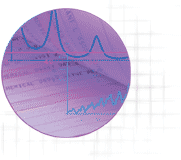Time Series |
 |
|||||||||||
|
Time Series performs univariate and multivariate analysis and enables you to explore both stationary and nonstationary models. You can select a model to fit your data and obtain estimates of the model's parameters. Choose from standard methods such as Yule-Walker, Levinson-Durbin, long autoregression, Hannan-Rissanen, and others. |
||||||||||||
|
After reading in and plotting your data, use the built-in Time Series transforms for linear filtering, simple exponential smoothing, differencing, moving averages, and more to transform your raw data into a form suitable for modeling. Calculating and plotting the correlation and partial correlation functions will help you spot patterns. Once you select a model to fit your data, Time Series makes it easy to estimate the model parameters and check its validity using residuals and tests such as the portmanteau, turning points, difference-sign, and others. |
 |
|||||||||||
|
Lesen Sie unsere Download-Hinweise |
||||||||||||
|
If you need to predict future values, Time Series can help there too. Best linear predictor and approximate best linear predictor are among the commonly used forecasting techniques included. Collect new data and you can instantly update your predictions. |
||||||||||||
|
In addition, Time Series enables you to analyze your data in frequency space. The spectral analysis tools inside Time Series use the Fourier transform and other robust numerical methods. This package is also an ideal instructional tool with its description of the fundamentals of time series analysis and its clear, concise examples. |
||||||||||||
|
Nur als Download erhältlich. |
||||||||||||
